 |
 |
 |
| |
Inflammation/Morbidity/Mortality -
Coagulation and Morbidity in Treated HIV Infection
|
| |
| |
Reported by Jules Levin
5th International Workshop on HIV & Aging Oct 20-21 Baltimore, MD, USA
Michael M. Lederman, MD
Scott R. Inkley Professor of Medicine
Case Western Reserve University

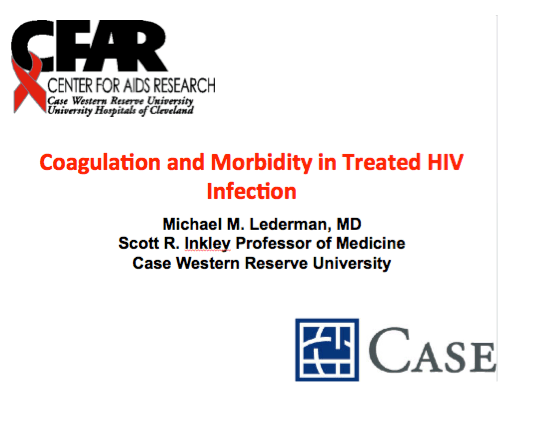
HIV infection reduces life expectancy even in the highly active antiretroviral therapy (HAART) era.
This figure shows the cumulative survival curves for HIV-1-infected persons (without hepatitis C co infection) in the pre-HAART era (pink) and in early (1997 to 1999, dark orange) and late (light orange) HAART era.
Survival probability has improved considerably with the introduction of HAART and the subsequent expansion and improvement of the available treatment options, however, HIV-1-infected patients still have a 10 year shorter expected survival compared with un-infected matched controls (blue).
The authors of this study note that "an ongoing effort is still needed to further reduce mortality rates for these persons compared with the general population".
Reference
Lohse N, Hansen AB, Pedersen G, et al. Survival of Persons with and without HIV infection in Denmark, 1995-2005. Ann Intern Med 2007;146:87-95.

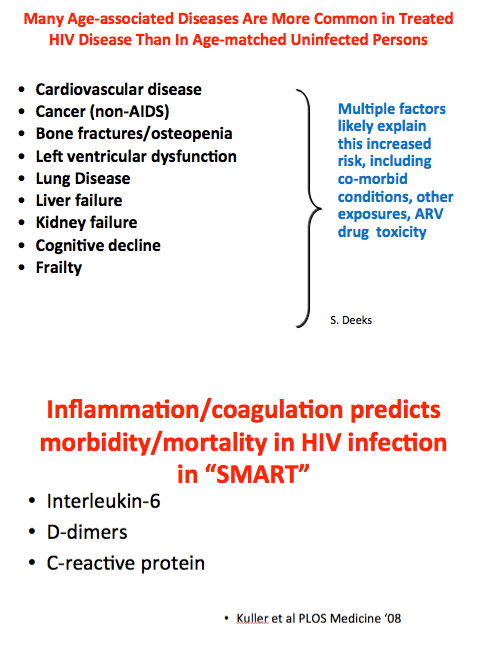
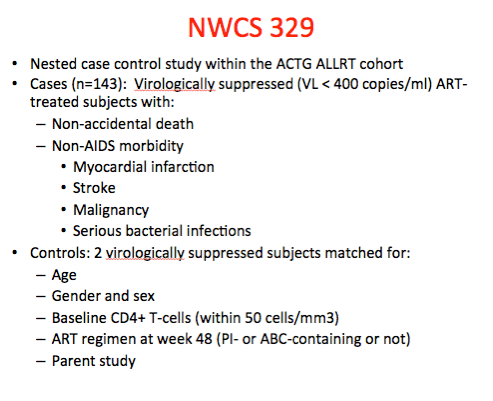
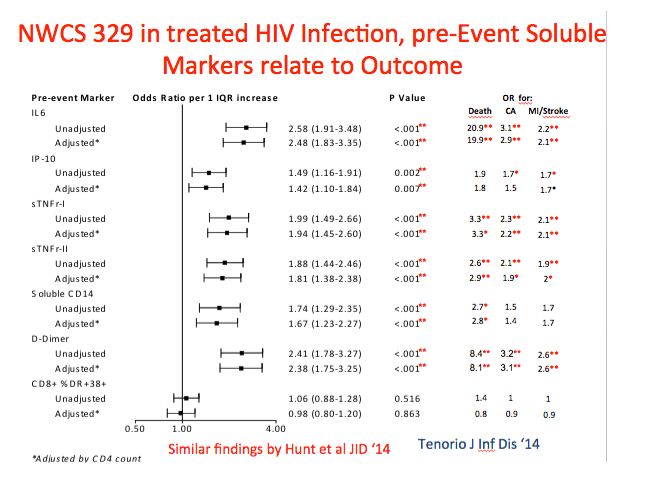
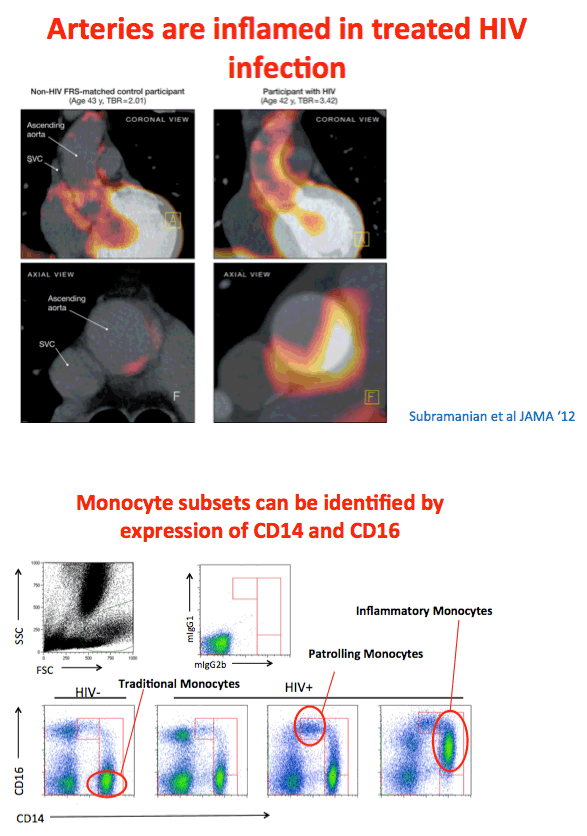

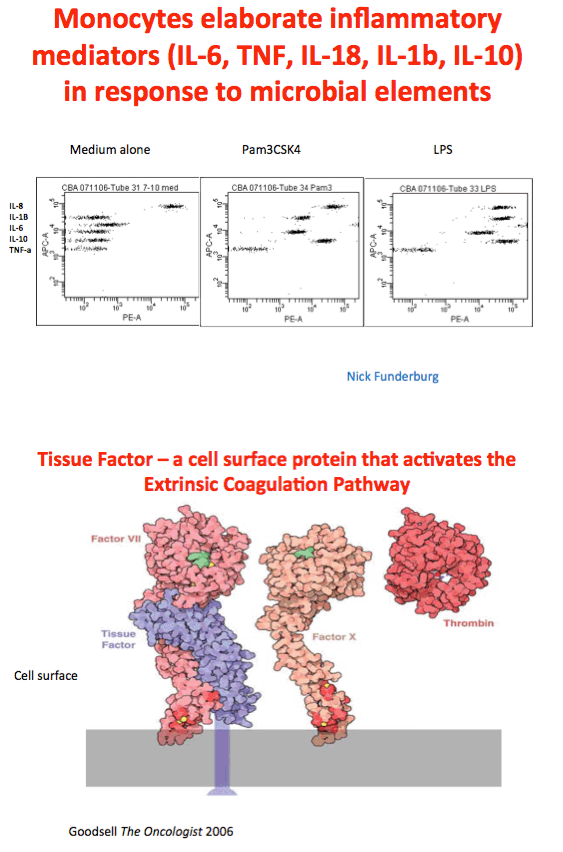

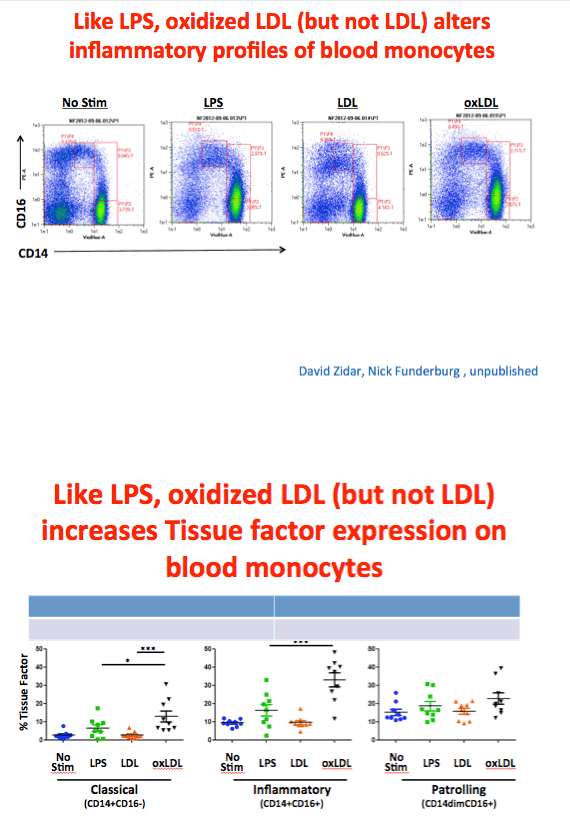

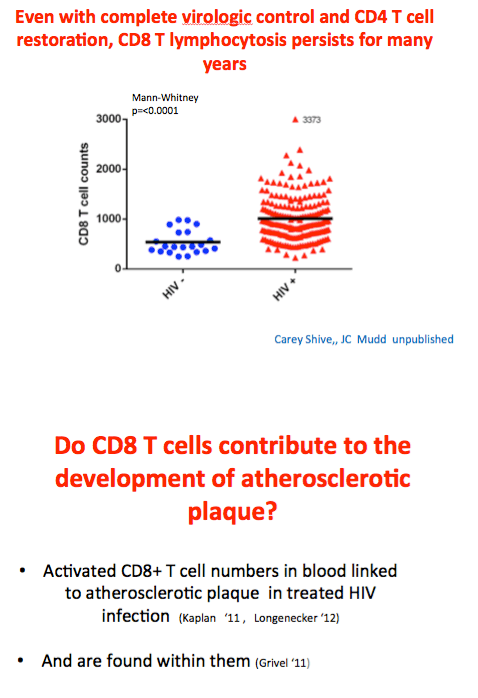
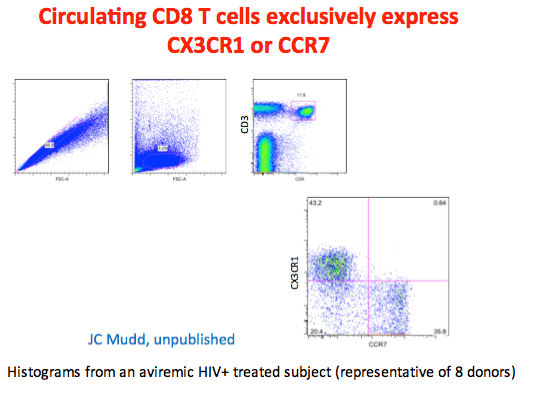
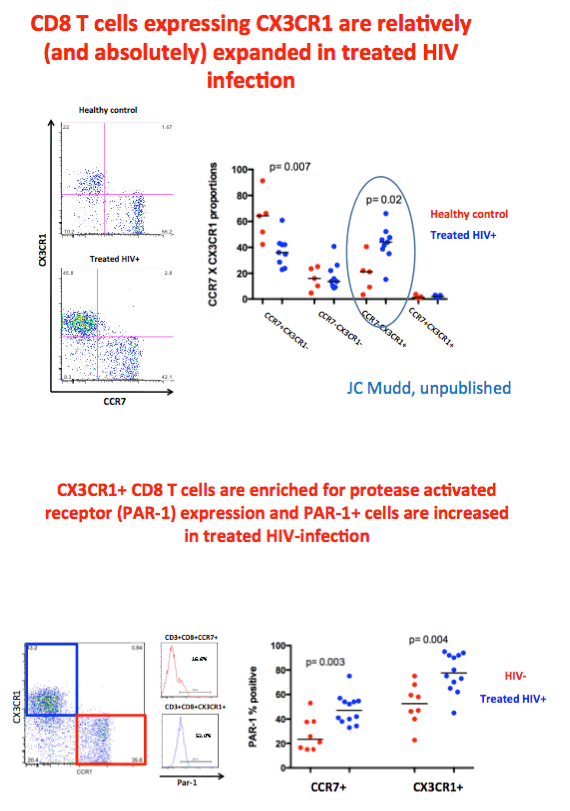

We also find that cd8 t cells express par-1....gpcr that interacts with components of coagulation cascade...upon exposure to thrombin, cleaves an n-terminal region of the receptor, newly formed end will fold back into the receptor and activated it.
Expressed by awide range of cells monos, glial cells, endothelial cells...activation in these cell types sets off pro-inflammatory processes...can mediated the secretion of il-1b, tnf, and il-8 on endothelial cells..
-looking at expression on cd8 t cells....
-so our group has previously shown that tf is increaed on monocytes, tf
initiates the extrinisic clotting cascade, faciliating the breakdown of prothrombin to thrombin...with heightened levels of these two factors...we have a model
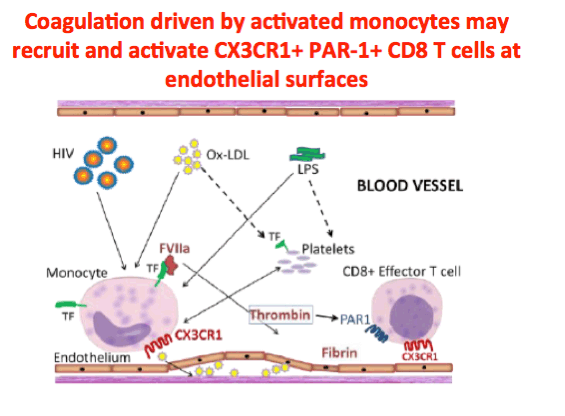
|
| |
|
 |
 |
|
|